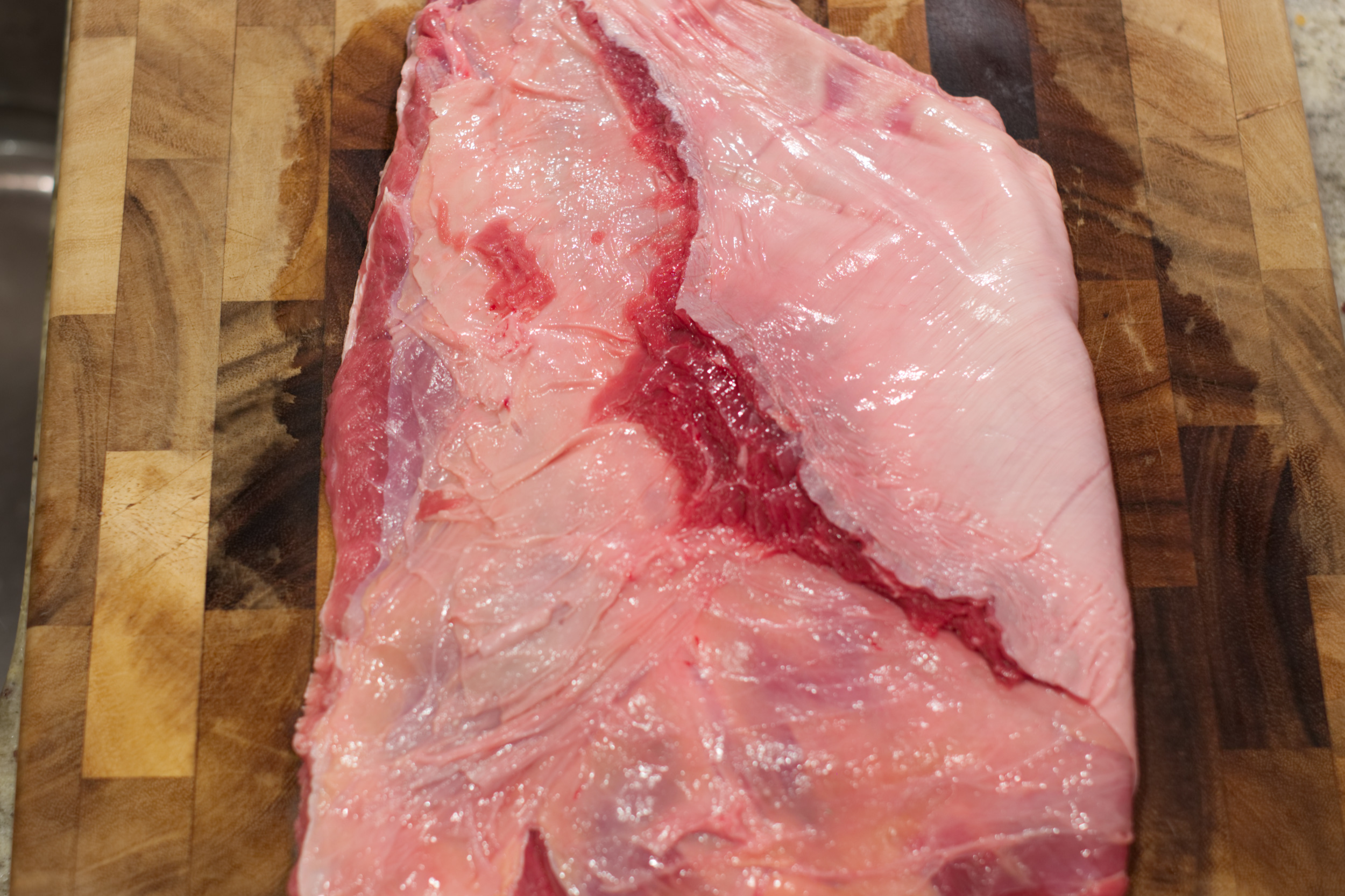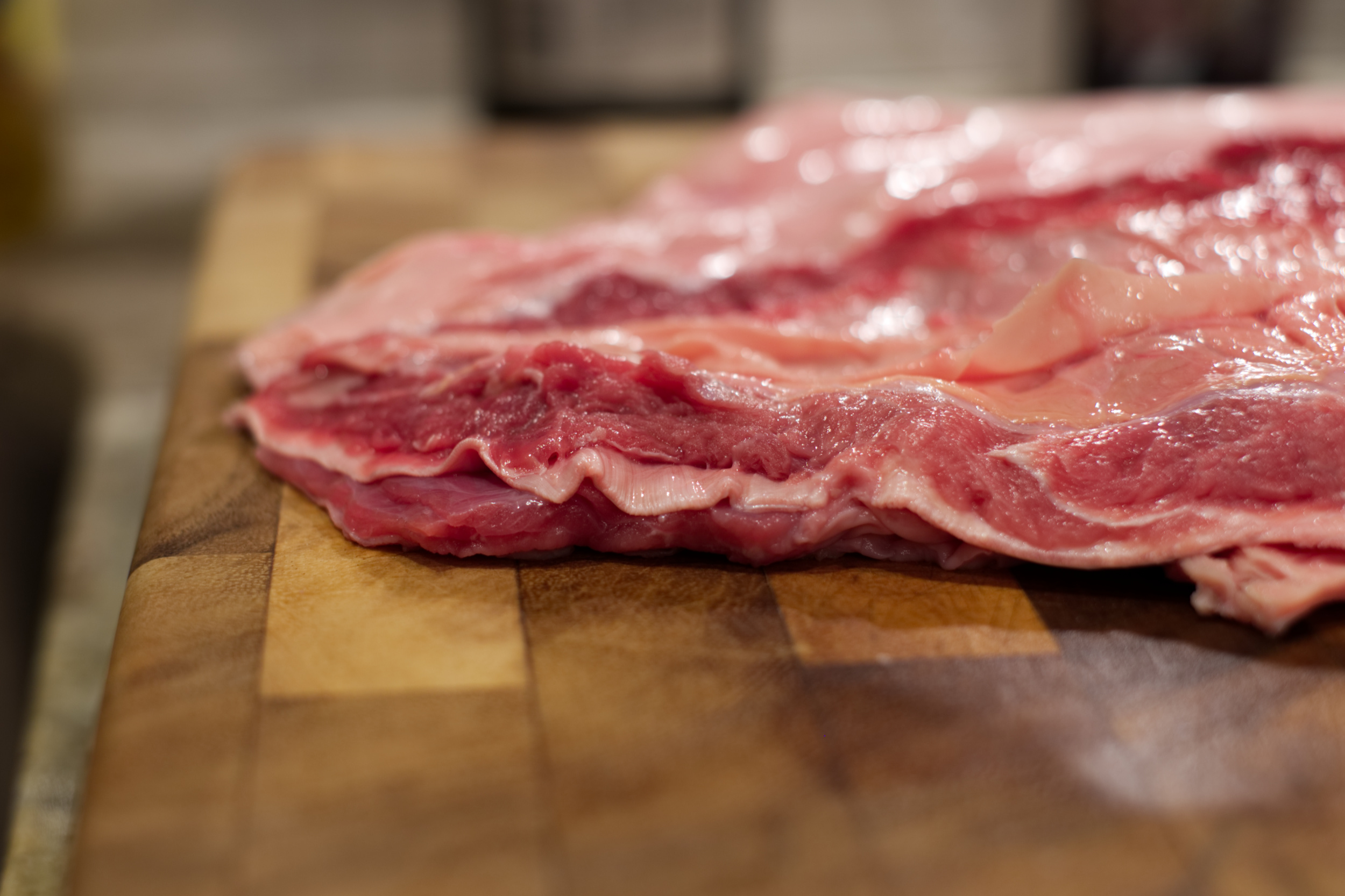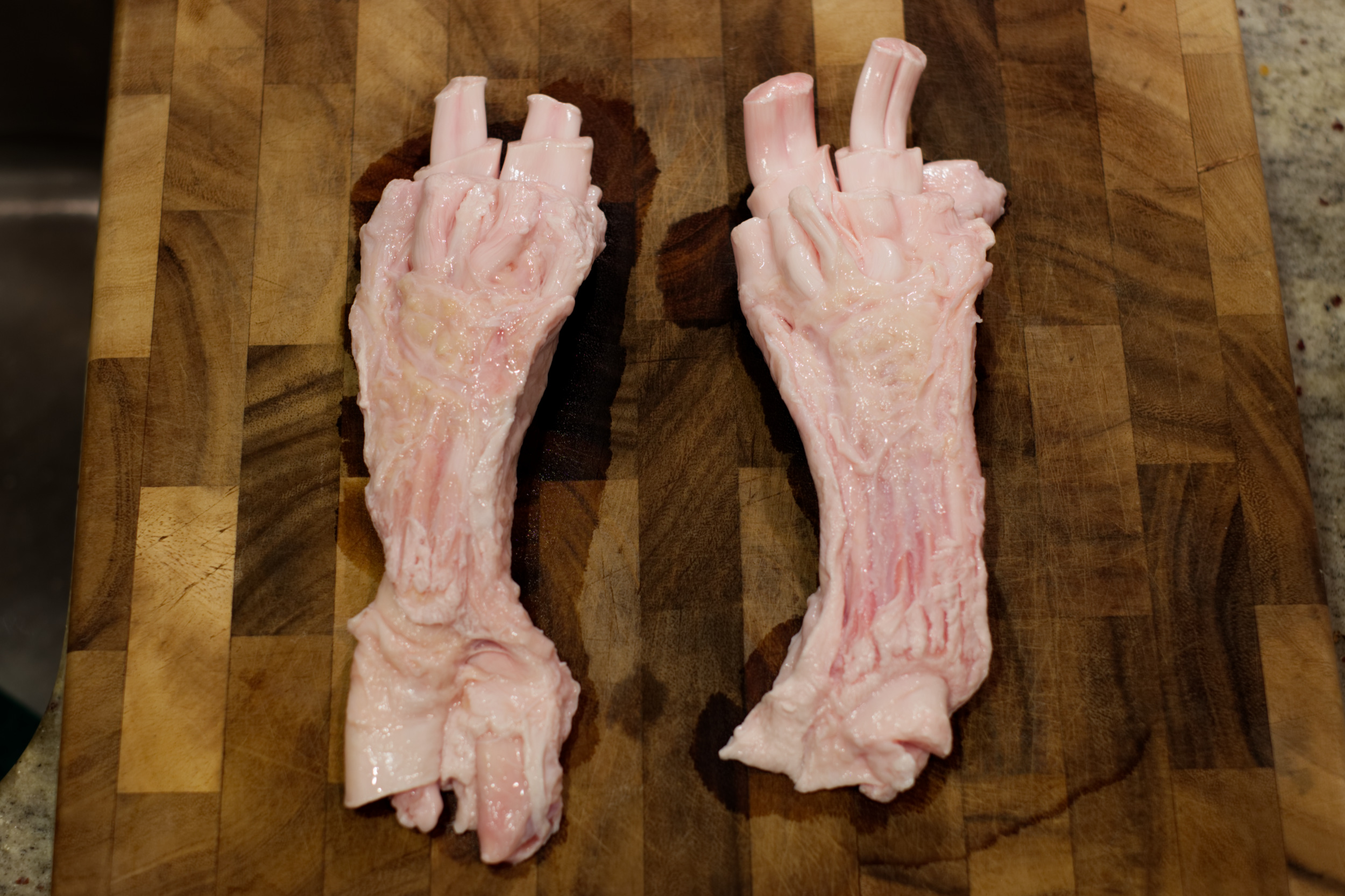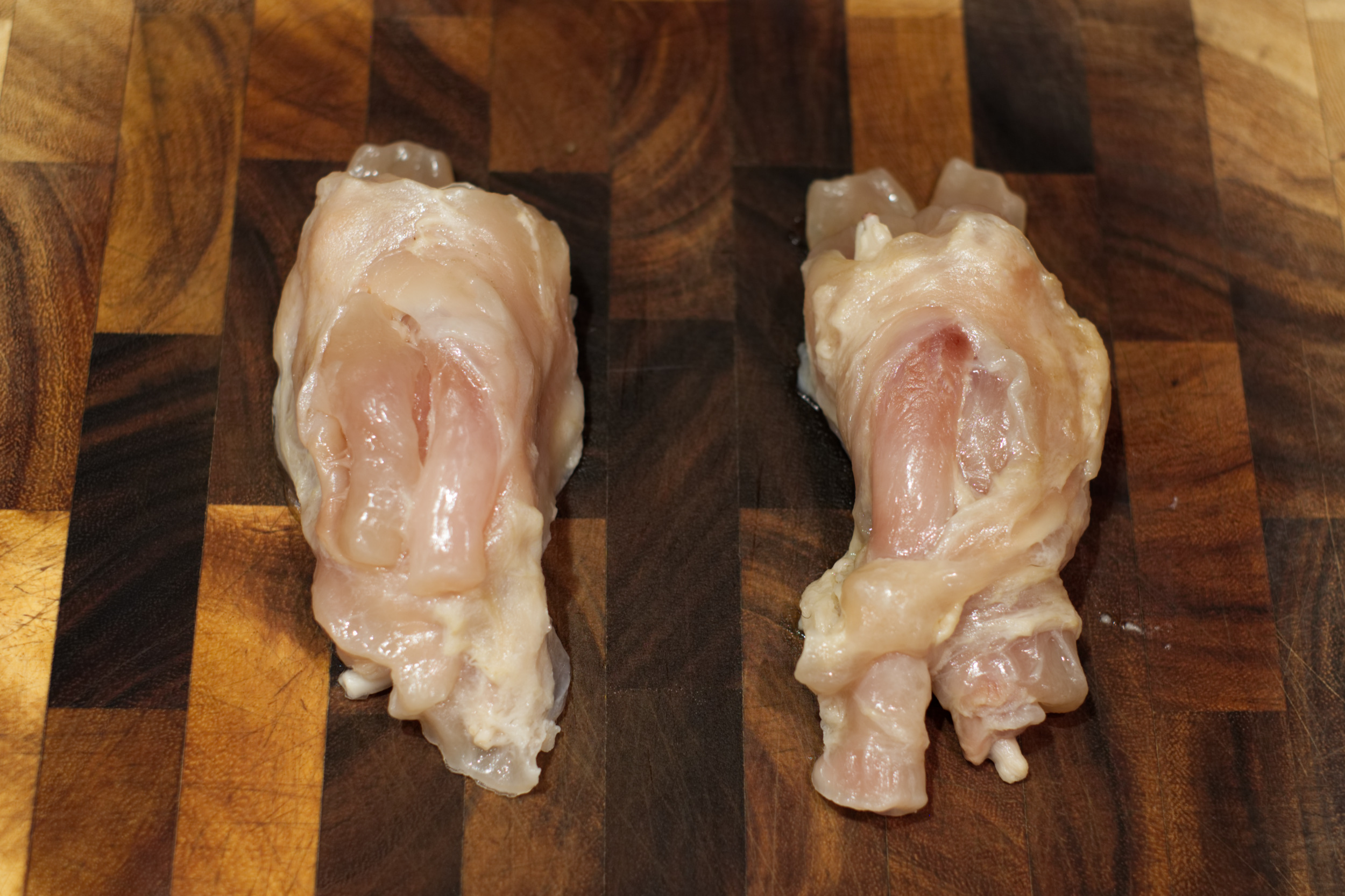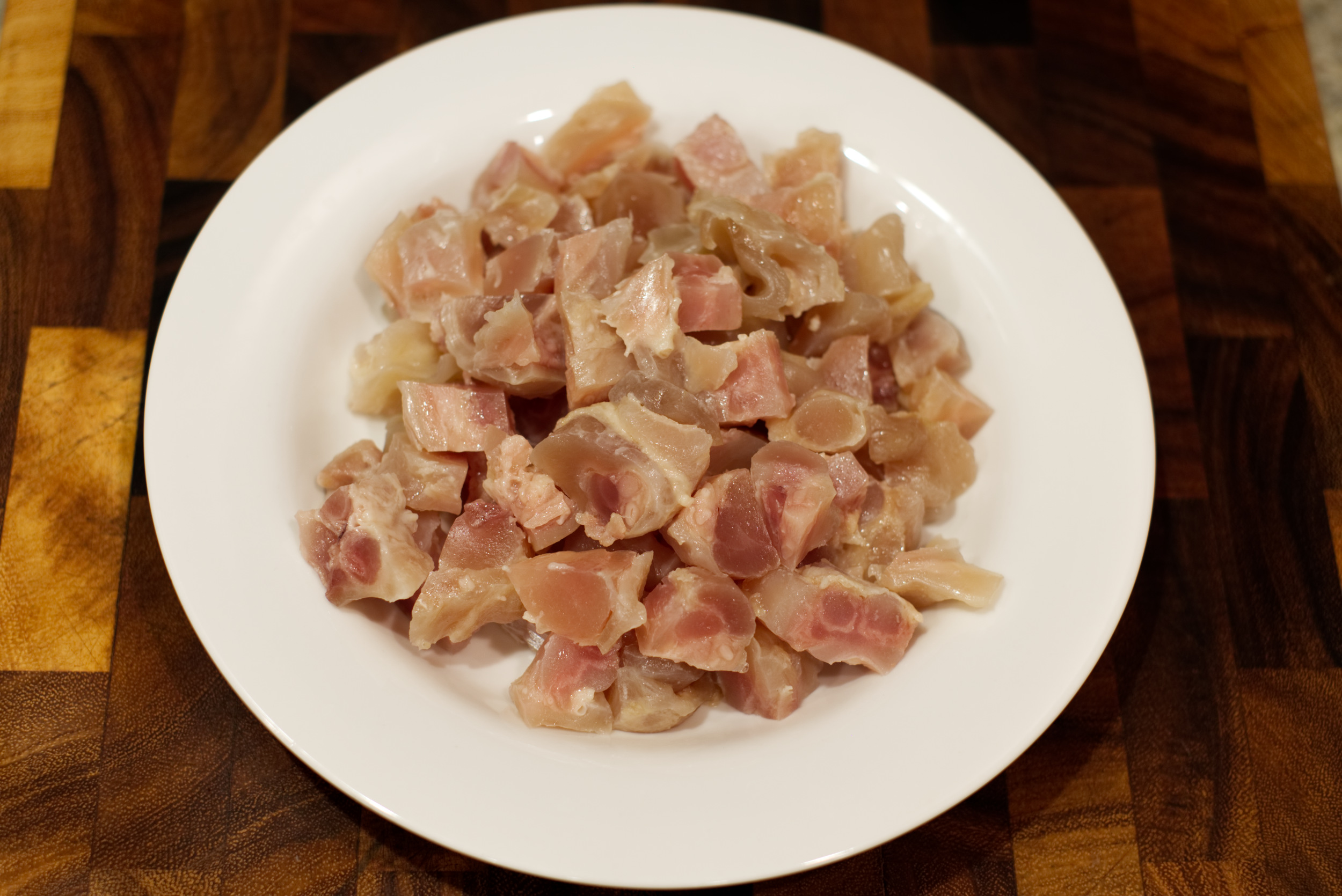Braised Beef Brisket 炆牛腩

Braised Beef Brisket 炆牛腩 man ngauh naahm is one of the best comfort foods for the brutally cold Midwest winters. The irony is that this dish originated in a part of China that’s pretty warm year round. In Cantonese menus, it can be found under English names such as braised/stewed beef/brisket. The heart and soul of this dish is taking some of the toughest and cheapest cuts and transforming it into something really delicious. I’ve tried this method of cooking with other cuts and turned out great with less effort and time, but I’m writing this to provide a more traditional starting point.
Later on, I’m planning on writing a version that my mom makes with short ribs cut in the style of kalbi and she has tricks of cooking this pretty fast. I’ve also made this recipe with daikon radish and commonly part of this dish. You can do this with other root vegetables such as potatoes or carrots prepared in the same way.
While you might see this listed as brisket on the English menu, technically this is not brisket, but a tough cut of flank steak and tendon. Don’t confuse this with the flank steak that you see in many grocery stores that is butchered in an American or European style. In Chicago, I’ve found this cut at Chinese and Vietnamese grocery stores and it’s flank that is surrounded by layers of connective tissue and fat as pictured below. (If you trim away the layers of connective tissue and fat, you’ll find the distinctly rope-like muscles of flank steak that you see in the American/European style of butchering.)
If you feel that you never had a chance of learning this recipe, now’s the chance to try it out! The steps may seem daunting, but I’m trying to be as specific as possible so you understand what to do and what to look for in each step.
Recipe:
2 lbs. flank steak with connective tissue
1 lb beef tendon
1 lb daikon radish
15 g. ginger (about 1 1/2 inch knob of ginger) and a few extra slices
20 g. brown candy sugar (don’t use regular brown sugar for baking - the real deal looks like flat rectangular bricks)
1/4 c. mixed sauce (wahn hahp jeung)
1 tbsp oyster sauce
1/2 tbsp soy sauce
5-6 star anise, crushed
3 cups of water (more as needed)
2 tbsp cornstarch
Salt to taste
Note: You can do this with a pressure cooker or not and steps below will have 2 ways of doing it. I prefer to do it with a pressure cooker to save time and the results are very similar.
1) Prepare the tendon
without pressure cooker
Bring a large pot of water to boil. Add the beef tendon to it and a few slices of ginger. Maintain a strong boil for 1 hour or until tender and add water as needed so the tendon is submerged in water. Discard the water and ginger and chill the tendon in the fridge.
Chill for at least 30 minutes in the fridge before you slice it. It is easier to slice the tendon when it has been chilled. You can get started on preparing the flank while this is chilling. After it is cut, set the tendon aside for the final step.
with pressure cooker
Add tendon to a pressure cooker and a few slices of ginger and enough water to cover. Heat and maintain 15 psi for 1 hour. Run cold water over to top of the pressure cooker to depressurize it so you can open it safely (you are good to go when the hissing sound stops). Discard the water and ginger and chill the tendon in the fridge.
Chill for at least 30 minutes in the fridge before you slice it. It is easier to slice the tendon when it has been chilled. You can get started on preparing the flank while this is chilling. After it is cut, set the tendon aside for the final step.
2) Prepare the flank
without pressure cooker
Slice the beef into pieces that are about 1 1/2 inch cubes. Try to anticipate how much it will shrink after cooking so you have nice sized pieces of meat after cooking.
In a large pot of boiling water, blanch for 5 minutes to draw out blood and other impurities. This will make the sauce smoother without gritty bits. You can add a slice of or two of ginger to the water to help remove any offal scent. Drain in a colander and discard the ginger. Rinse under cold water to remove any bits of coagulated blood.
Pat the meat dry with paper towels.
In a wok over high heat, add some neutral oil and sear the meat.
Add the 15 g. of sliced ginger and star anise and toss for about 30 seconds or until the spices are fragrant.
Add the mixed sauce (wahn hahp jeung) and oyster sauce and toss for about 15 seconds until fragrant. You don’t want to heat this too long or else it will burn easily.
Add 3 cups of water or until the meat is covered with water. Add brown candy sugar, and soy sauce and bring to a boil over high heat.
At this point, it is good to taste the sauce. Adjust as needed, but keep in mind that the sauce will be reduced later so it should taste more bland at this time.
Once the water is at a boil, reduce the heat to low, cover and simmer for 3 hours. You will need to periodically toss the meat and to check the water level. The meat should always be submerged. When adding cold water to it, be sure to bring it back to a boil and reduce to a simmer before walking away. While you do this, you may also skim away any excess rendered fat.
Towards the final 45 minutes - 1 hour, it is good to stop adding water so the final part of it will reduce the sauce as it cooks. Keep an eye on how fast the sauce reduces and you may need to keep the wok uncovered and boil longer to reduce the sauce as necessary at the very end. Taste and adjust seasoning if needed.
with pressure cooker
In a large pot of boiling water, blanch for 5 minutes to draw out blood and other impurities. This will make the sauce smoother without gritty bits. You can add a slice of or two of ginger to the water to help remove any offal scent. For a pressure cooker, you want to cook the flank whole in this method. The pressure cooker will do the job very evenly and you’ll get a cleaner cut of meat after you are done cooking. Drain in a colander and discard the ginger. Rinse under cold water to remove any bits of coagulated blood.
Pat the meat dry with paper towels.
Over high heat in a cast iron skillet, sear the meat. (I do this separately because my pressure cooker is not very wide and very hard to toss anything with one big pieces of meat in it. This part of the recipe is to sear the meat and to briefly make the spice and sauces aromatic. If you fit this all in your pressure cooker, great. That’s one less thing to clean.)
In the pressure cooker, over medium high heat add the 15 g. of sliced ginger and star anise and toss for about 30 seconds or until the spices are fragrant.
Add the mixed sauce (wahn hahp jeung) and oyster sauce and toss for about 15 seconds until fragrant. You don’t want to heat this too long or else it will burn easily.
Add 3 cups of water and stir the bottom so the bottom of the pressure cooker does not have clumps of undissolved sauce to prevent burning. The water level should just cover the meat.
(Add the flank steak if you seared it on the side.)
Cover the pressure cooker and bring it to 15 psi for 45 minutes. Depressurize it by running cold water over the top until hissing sound stops.
Once you can safely open the pressure cooker, using tongs remove the meat and set aside to let it cool for at least 10 minutes. Reserve all the liquid in the pressure cooker in a wok as this will become the sauce. It is optional to strain the liquid into the wok to remove any ginger and star anise. When the meat can be handled, cut it into about 1 inch pieces and set aside.
In a wok over high heat, bring the reserved liquid to a boil. Add the brown candy sugar to dissolve and soy sauce. Continuously boil for about 15 minutes to reduce the sauce. Taste and adjust seasoning if needed. Add the meat back into the wok and toss.
3) Prepare daikon radish
Anytime while the flank is cooking, peel the daikon radish and slice into 2 inch roll cut pieces. Set aside.
Set a large separate pot with some water and a rack for steaming. Time this so the water is at a boil and the radish will be steaming during the final 10-15 minutes or cooking the meat or reducing the sauce. You’ll get used to the timing of this as you make it more.
Steam the daikon radish for about 10 minutes or until tender. Set aside.
4) To finish
In a small bowl, add 2 tbsp of cornstarch and 2 tbsp of water and mix to combine.
In the wok with the meat and reduced sauce, bring the heat to medium high so the sauce is at a boil. Add the cornstarch slurry as desired to thicken the sauce to your preference.
Add the tendon pieces and toss for about 30 seconds to 1 minute just until the tendon is heated. (Adding the tendon at the very end is important for the texture. If you add the cooked tendon too early, it will impart too much gelatin to the sauce making the texture sticky.)
Add the steamed daikon radish and toss just until the sauce is coated evenly on everything.
Plate and serve! (This hearty dish is also really good as leftovers.)
